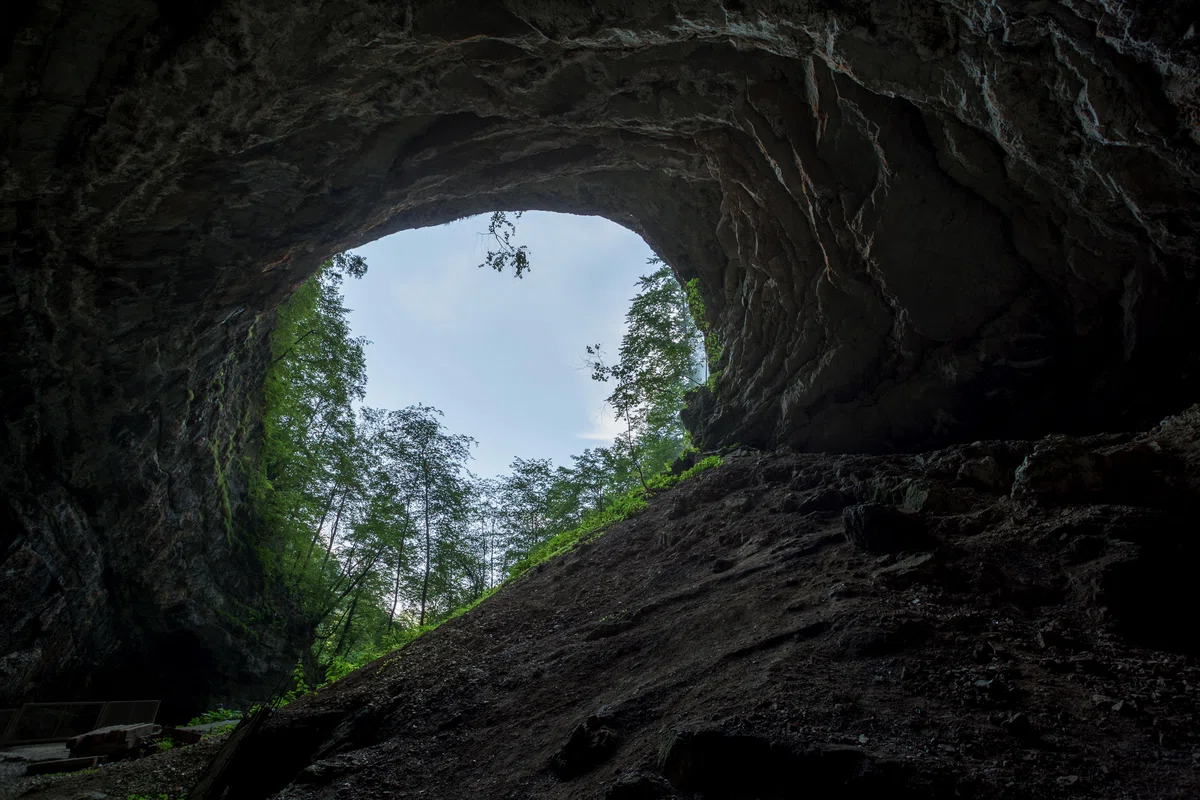
Best caves in Georgia. Visit the Dzudzuani cave
If you are a fan of unusual caves, then visit the Dzudzuani cave where the oldest remains of thread made from wild flax were found. There are also traces of ancient human habitation and examples of Upper Paleolithic cave art. Make sure to visit this place if you want to find something interesting for yourself.
It is known that karst processes are most active in limestone layers. The majority of the Chiatura municipality consists of such layers, which explains the presence of a large number of caves in this area. Although most of these caves have not yet been studied and explored.
The Dzudzuani cave, located 2 km east of the village of Mgvimevi in the Nekresi River Valley, is well-known in scientific circles around the world. Here, archaeologists discovered the oldest remains of twisted thread made by humans from wild flax. Since 1996, an international expedition has been conducting research in the cave, which includes Georgian, American, and Israeli specialists. The goal of the expedition is to establish the migration routes of Homo sapiens of the Paleolithic era and to study their activities. Over the years of research, only seven layers of Upper Paleolithic habitation have been identified on the cave site, and about a hundred items have been found: bones with ornaments, pendants, amulets, talismans, and stone tools. Scientists also found the aforementioned linen thread in the cave.
Laboratory research has established that the thread was handmade using a certain technology 34,000 years ago: the flax was crushed, spun, and dyed. Based on this, the thread found in the Dzudzuani cave is the oldest in the world. Prior to this discovery, the oldest thread was considered to be the one made from nettle 2.9 million years ago, found in Dolní Věstonice in the modern-day Czech Republic. However, the sample found in Dzudzuani pushes back the date of human-made thread by 5,000 years.
Traces of ancient human habitation in Chiatura have also been found in the Mgvimevi, Ortvala Kldi (Tsilto III), Chipiani Kldi, and Gvardjilas Kldi caves. Along with tools and decorations made of flint, obsidian, bone, and deer antlers, examples of cave art created by humans of the Upper Paleolithic period were also discovered in the cave.













39 comments
Log in to leave a comment
С 1996 года грузинские, американские и израильские специалисты с целью установить пути миграции Гомо Сапиенса эпохи палеолита ведут работы в пещере Дзудзуани, расположенной в 2 км, в долине реки Некреси.
Обнаружено семь слоёв проживания и 100 предметов: кости с орнаментами, подвески, амулеты, обереги, каменные орудия, САМЫЕ древние остатки крученой нити из волокна дикого льна. Нить была изготовлена 34 тысячи лет назад вручную по определённой технологии. Лён мяли, пряли и окрашивали. До этого самой древней нитью считалась нить из крапивы 2 900 тысяч лет назад найденная на территории Чехии. Образец же, обнаруженный в Дзудзуани, отодвинул дату изготовления человеком нити на 5 000 лет.
Следы обитания древнего человека в Чиатура обнаружены также в пещерах Мгвимеви, Ортвала Клде, Чипиани Клде, Гварджилас Клде. Наряду с орудиями и украшениями из кремня, обсидиан, костей и оленьего рога, в пещере были обнаружены также образцы живописи.